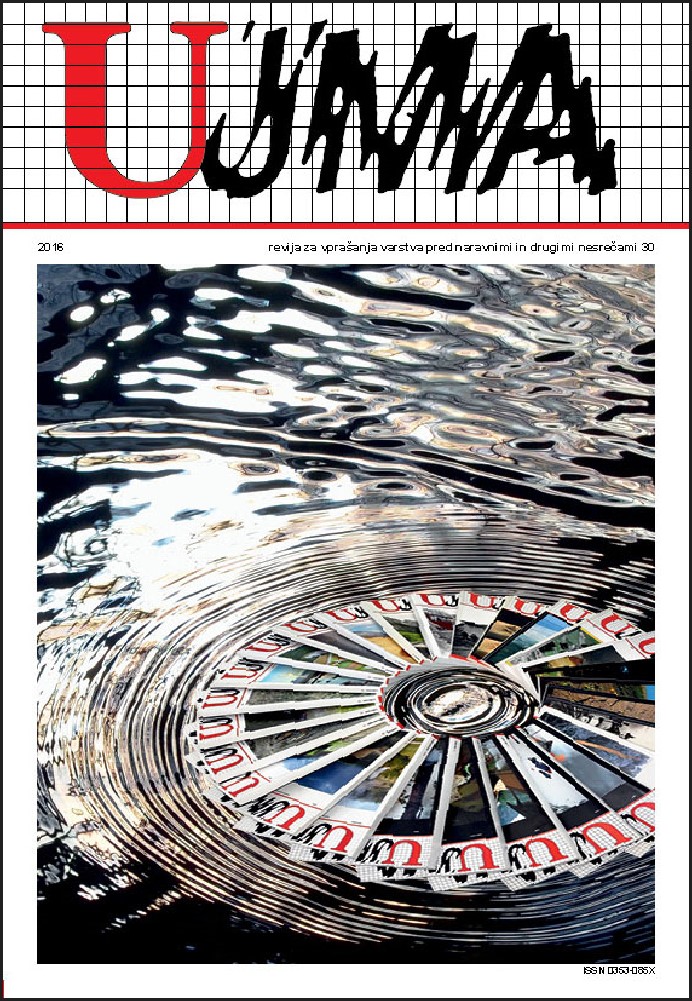ANTI-TANK MINES AND HUMANITARIAN ANTI-MINE ACTIVITY AROUND THE WORLD
Abstract
By adopting two conventions and their annexes, the vast majority of countries have committed themselves to respecting the limitations posed on the production and use of anti-personnel mines and submunition. There has been a downward trend in the number of victims related to these two categories of dangerous explosive ordnance, but the number of victims of anti-tank mines has been increasing and is gradually becoming a recognized global problem. Calculations of the number of anti-tank mines laid around the world are very imprecise. Anti-tank mines have been used in various ways during armed conflicts, all of which have had significant effects on the civilian population. This article presents the issue of anti-tank mines laid around the world and their humanitarian consequences.
References
Bizjak, M., 2003/2004. Uporaba psov v humanitarnem razminiranju. Ujma, 17/18, str. 315–323.
Bizjak, M., 2006. Strojni načini razminiranja in njihova uporaba pri humanitarnem razminiranju. Ujma, 20, str. 310–320.
Filippino, E., 2005. Mine Action: Lessons and Challenges. Geneva, Geneva International Centre for Humanitarian Demining.
Gallimore, A., in Monin L., 2002. The devil’s gardens. A History of Landmines. London, Pimlico.
Geneva International Centre for Humanitarian Demining (GICHD), 2012. Mines other than Anti-Personnel Mines. Geneva, Geneva International Centre for Humanitarian Demining.
Geneva International Centre for Humanitarian Demining (GICHD), 2014. The humanitarian and developmental impact o Anti-Vehicle mines. Geneva, Geneva International Centre for Humanitarian Demining.
Harutyunyan, A., V., 2012. The Lethality Ratio of Anti-vehicle Mines. Journal of ERW and Mine Action, issue 16.3, str. 50–52.
King A., V., 2009. IEDs and their impact on Mine action, Journal of ERW and Mine Action, issue 13.3, 54–59.
Küchenmeister, T., 2000. Why Antivehicle Mines should also be banned. Berlin, German Initiative to Ban Landmines.
Landmine Monitor, 2012. The Humanitarian Impact of Antivehicle Mines. http://www.the-monitor.org/media/984226/The-Humanitarian-Impact-of-Antivehicle-Mines-Nov-2012_FINAL.pdf [13. 4. 2016].
Landmine&Cluster Munition Monitor, 2012. The Humanitarian Impact of Antivehicle Mines. http://www.the-monitor.org/media/984226/The-Humanitarian-Impact-of-Antivehicle-Mines-Nov-2012_FINAL.pdf [25. 4. 1916].
UNMACA, 2015. Fast facts July to December 2015. http://www.mineaction.org/sites/default/files/documents/MAPA%20Fast%20Facts%20Jul-Dec%202015.pdf [16. 4. 2016].
McGrath, R., 2000. Landmines and Unexploded Ordnance. London, Pluto Press.
McGrath, R., 2000. Antipersonnel effects of antivehicle mines. Landmine Monitor Report, http://www.landmine.de/fileadmin/user_upload/pdf/Publi/LM2000AVM.pdf (16. 4. 2016).
North Atlantic Treaty Organisation, 2007. Test Methodology for Protection of Vehicle Occupants against Anti-Vehicular Landmine Effects (TR-HFM-090). http://ftp.rta.nato.int/public//PubFullText/RTO/TR/RTO-TR-HFM-090///$$TR-HFM-090-ALL.pdf (16. 4. 2016)
Orifici, D., 2007. A Guide to Mine Action and Explosive Remnants of War. Geneva, Geneva International Centre for Humanitarian Demining.
Rapillard P. in Walton M., V., 2014. Humanitarian and Development Impact of Anti vehicle Mines. Journal of ERW and Mine Action, issue 3, 46–51.
Radonić, V., Giunio, L., Biočić, M., Tripković, A., Lukšić, B. in Primorac, D., 2004. Injuries from Antitank Mines in Southern Croatia. Military Medicine, Vol. 169, 320–324.
Zirnsak, M. in Clarke K., 2005. The Road to a Truly Mine-Free World: Government Attitudes to Anti-Vehicle Mines 2005. Melbourne, Justice and International Mission.
Unit Synod of Victoria and Tasmania Uniting Church in Australia. https://victimassistance.files.wordpress.com/2012/12/the-road-to-a-truly-mine-free-world-government-attitudes-to-anti-vehicle-mines-2005_anbl.pdf [16. 4. 2016].
Elektronsko dopisovanje: Saunders, Steve – EOD Operations Officer OKPCC/Kosovo (2001–2006).
Avtorjevi osebni zapiski in dnevnik, ki ga je vodil kot operativni častnik Minskega centra OZN Kosovo od oktobra 1999 do januarja 2001.
Downloads
Published
Issue
Section
License

This work is licensed under a Creative Commons Attribution-NonCommercial-NoDerivatives 4.0 International License.
The articles are made available to the public under Creative Commons Attribution-NonCommercial-NoDerivatives 4.0 International (CC BY-NC-ND 4.0).


